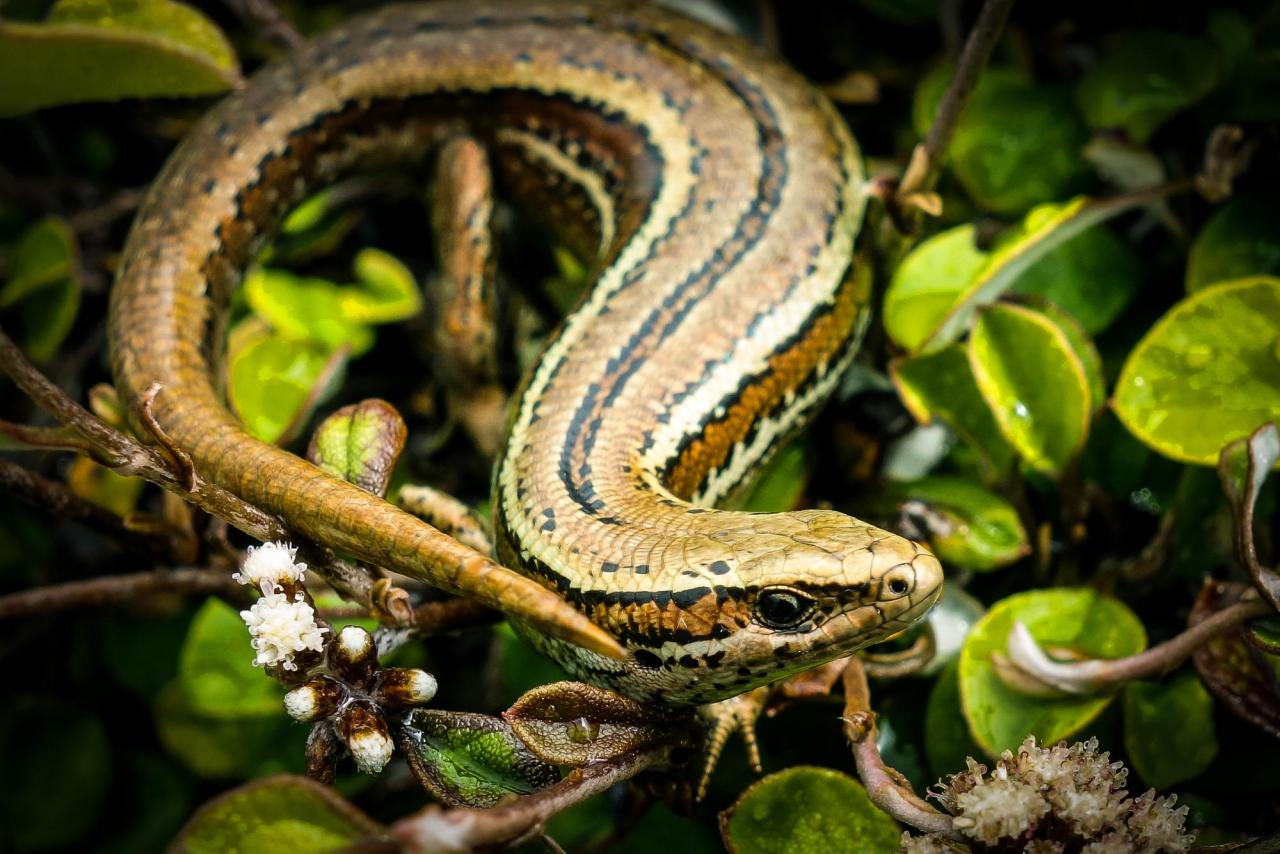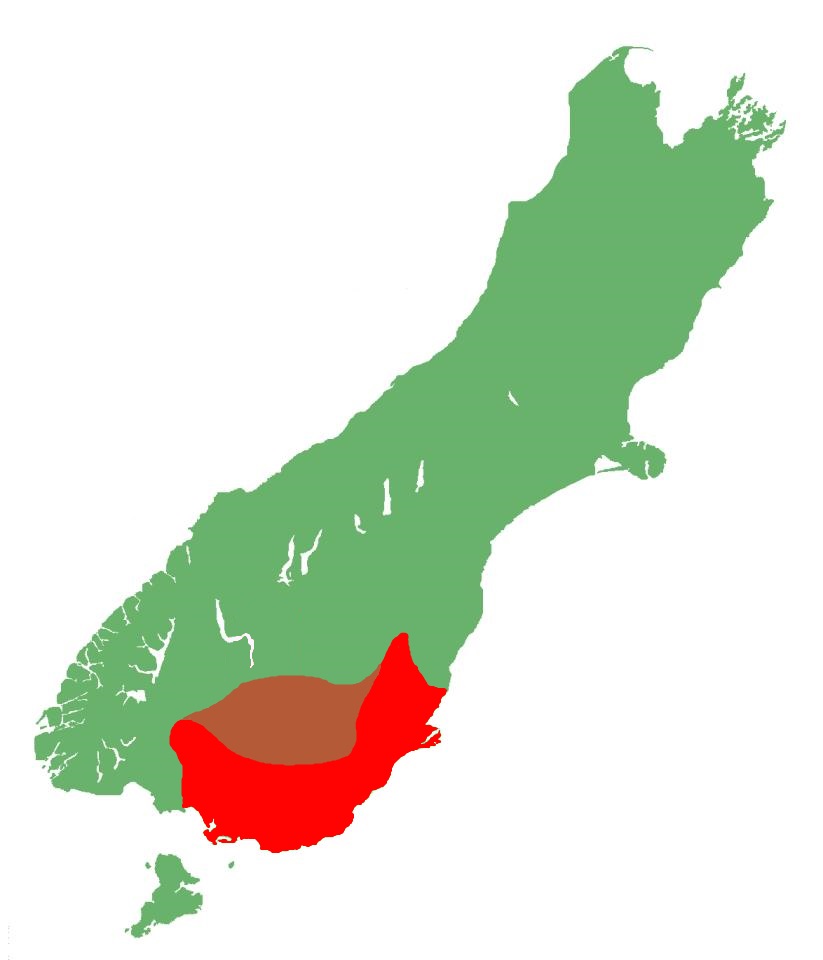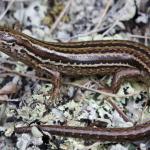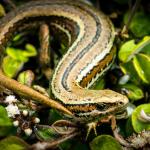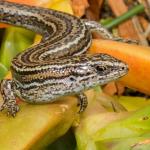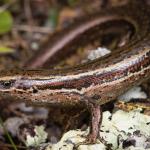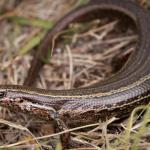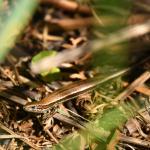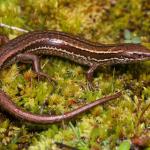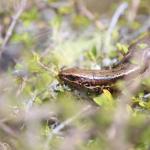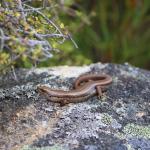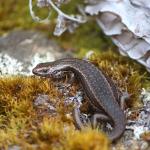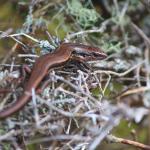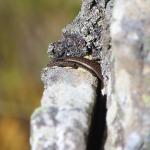- Home
- Herpetofauna Index
- Native
- Oligosoma Murihiku
Oligosoma murihiku
Herbfield Skink
Oligosoma murihiku
(Jewell, 2022)
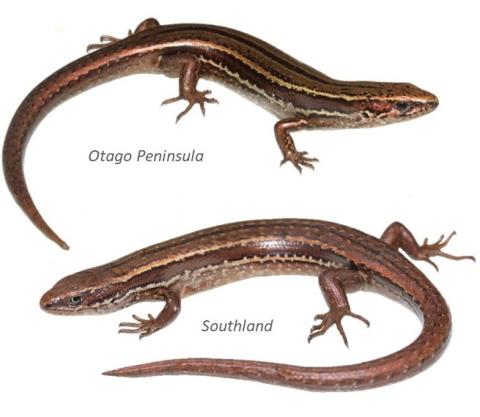
Length: SVL up to 75mm, with the tail being equal to or longer than the body length
Weight: up to 6 grams
Description
A small, beautifully patterned skink from the lowlands of the south-eastern South Island. Although distinct in their own right, they were historically placed within the cryptic skink complex (Oligosoma inconspicuum), along with other species such as the burgan skink (Oligosoma burganae), and southern skink (Oligosoma notosaurus).
This species, although similar to some other members of the cryptic skink complex, is generally characterised by its chestnut to dark brown dorsal (upper) surfaces, which are covered by varying degrees of dark flecking, although some individuals lack flecking on the top of the head. A mid-dorsal stripe (broken or complete) is often present, but breaks up or is completely absent on the tail.
The lateral surfaces (sides) typically bear relatively smooth and bright pale cream dorsolateral and mid-lateral stripes, with the latter beginning below the eye, passing through the ear and extending above the legs to terminate at the base of the tail.
Ventral (lower) surfaces typically range from light to vibrant yellow with minimal or no flecking, whilst the throat is lighter in colouration, often white to pale grey with sparse dark flecking.
Life expectancy
Largely unknown, but as with most of Aotearoa's small endemic skinks, their life expectancy is likely to be at least 10-20 years in the wild.
Distribution
Restricted to lowland habitats in the Southland Plains (incl. Tiwai Point wetlands), and in Eastern Otago from the Aparima River to the Shag River, with particularly notable populations in the Dunedin area, Macraes Flat, and Wairio.
Ecology and habitat
Herbfield skinks are a diurnal and terrestrial species (occasionally semi-arboreal climbing into tall shrubs). While they do sun bask, they typically do so in a cryptic manner, while hiding in dense vegetation or near the entrance to retreats. Consequently, they can sometimes be difficult to observe basking. These skinks have been recorded in a variety of lowland habitats from the coastline up to 670 m (a.s.l). In comparison to the cryptic skink (Oligosoma inconspicuum), they tend to occur in more vegetated habitats such as tussock grasslands, scrublands, herbfields, wetlands, and boulderfields (Jewell, 2022).
Social structure
Largely unknown, although some populations have been seen to occur at remarkably high densities.
Breeding biology
Poorly understood. Females have been recorded producing 1-3 young annually in summer (January-March), although it is likely that older animals may be able to produce up to 6 offspring per year.
Diet
Herbfield skinks are primarily insectivorous, feeding on small arachnids, beetles, and other invertebrates, but are also known to take advantage of the fruit and nectar of certain native plants when they are in season.
Disease
The diseases and parasites of Aotearoa's reptile fauna have been left largely undocumented, and as such, it is hard to give a clear determination of the full spectrum of these for many species.
The herbfield skink, as with many of our other Oligosoma species, is likely to be a host for at least one species of endoparasitic nematodes in the Skrjabinodon genus (Skrjabinodon poicilandri), as well as at least one strain of Salmonella.
As with some of the other small skink species in the south-eastern South Island, it is likely that the herbfield skink is a host for the ectoparasitic mites Odontacarus lygosomae, and Ophionyssus scincorum.
Conservation strategy
Listed in the most recent threat classification as 'At Risk - Declining'. This species is not being actively managed, although at least one population exists within a predator-resistant environment (Ōrokonui Ecosanctuary, Dunedin).
Interesting notes
The specific name 'murihiku' is a reference to their distribution in the lower South Island, with Murihiku being the original name for the region south of the Waitaki River, although it is now often more often associated with the Southland region.
Herbfield skinks are members of the cryptic skink species complex - a group of related taxa with similar morphology which at one stage were regarded as one highly variable species (Oligosoma inconspicuum)).
References
Jewell, T. (2008). A photographic guide to reptiles and amphibians of New Zealand. Auckland: New Holland.
Jewell, T. (2019). Skinks of southern New Zealand. A field guide. Edition 4.
Jewell, T. (2022). Oligosoma murihiku n. sp. (Reptilia: Scincidae) from the south-eastern South Island of New Zealand. Jewell Publications, Occasional Publication #2022C.
van Winkel, D., Baling, M., Hitchmough, R. 2018. Reptiles and amphibians of New Zealand – a field guide. Auckland university press, Auckland New Zealand.

